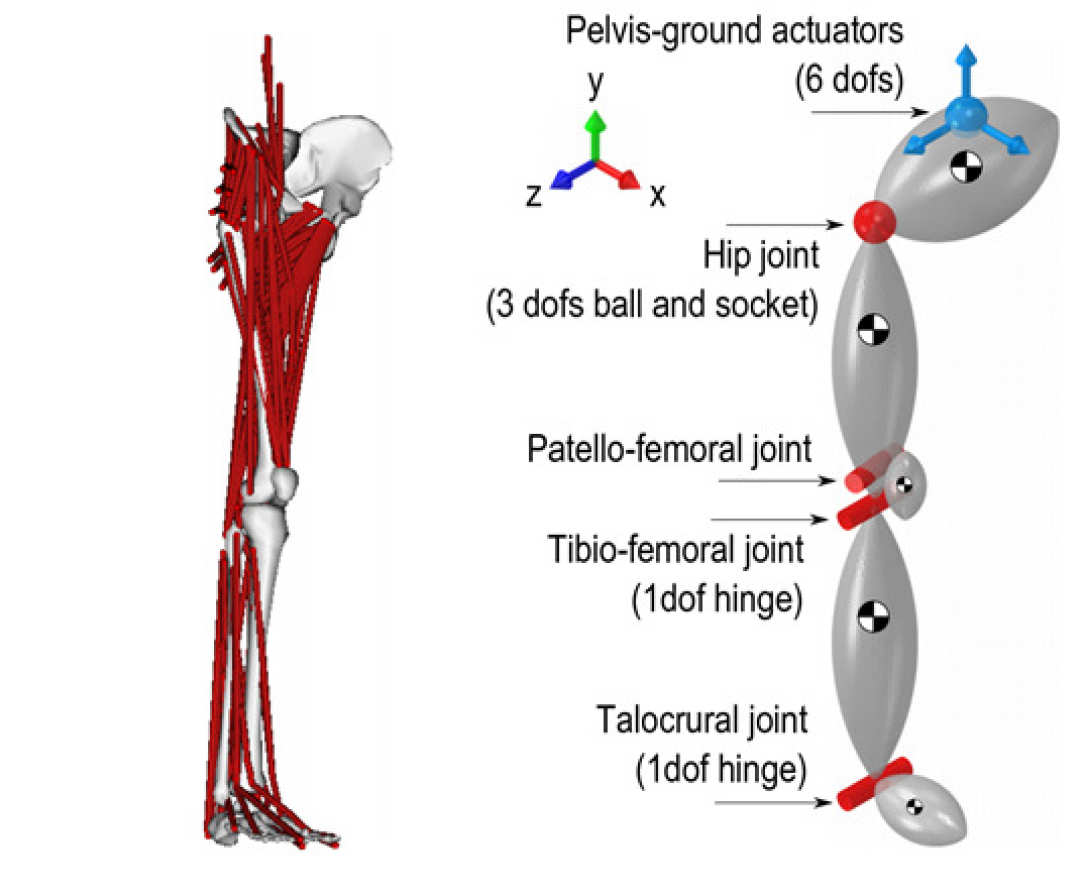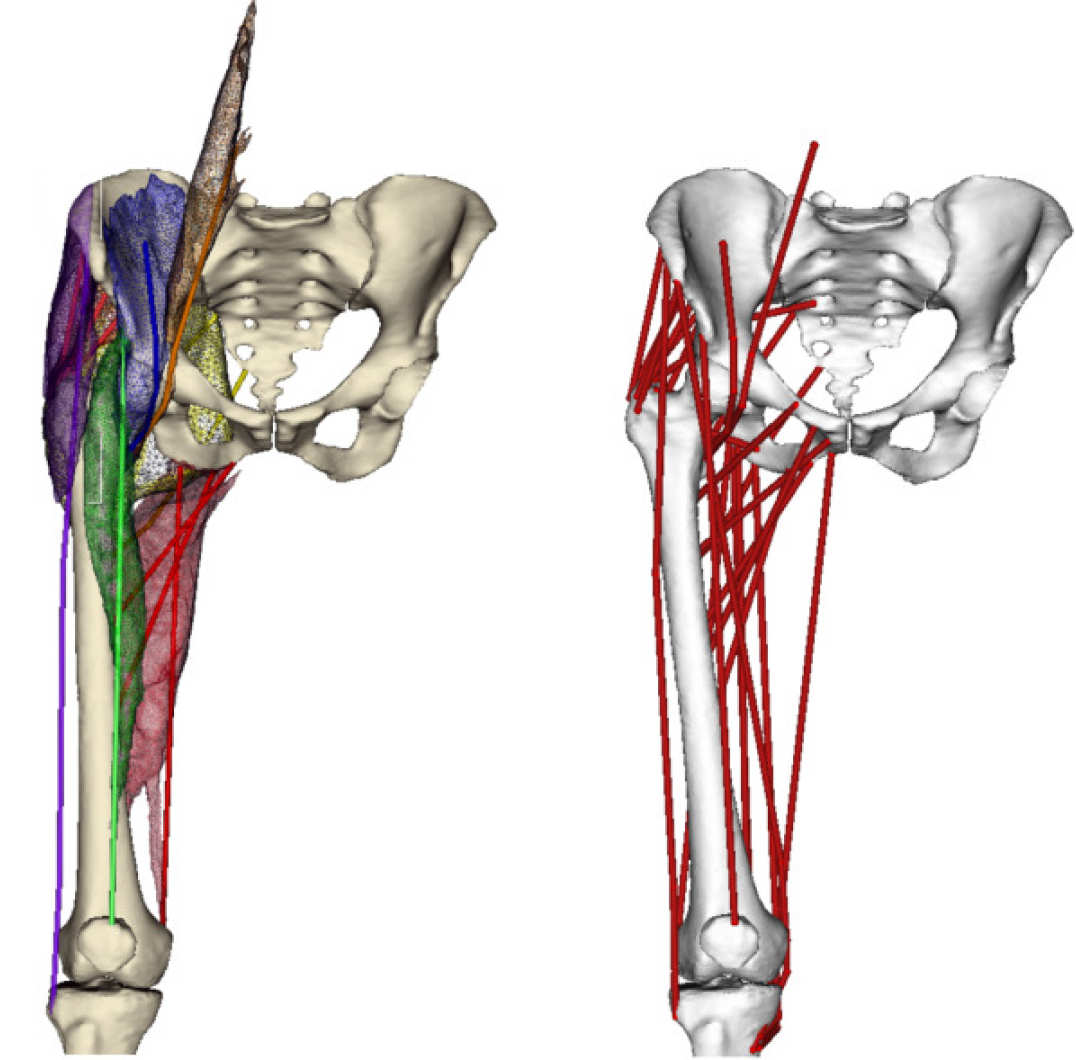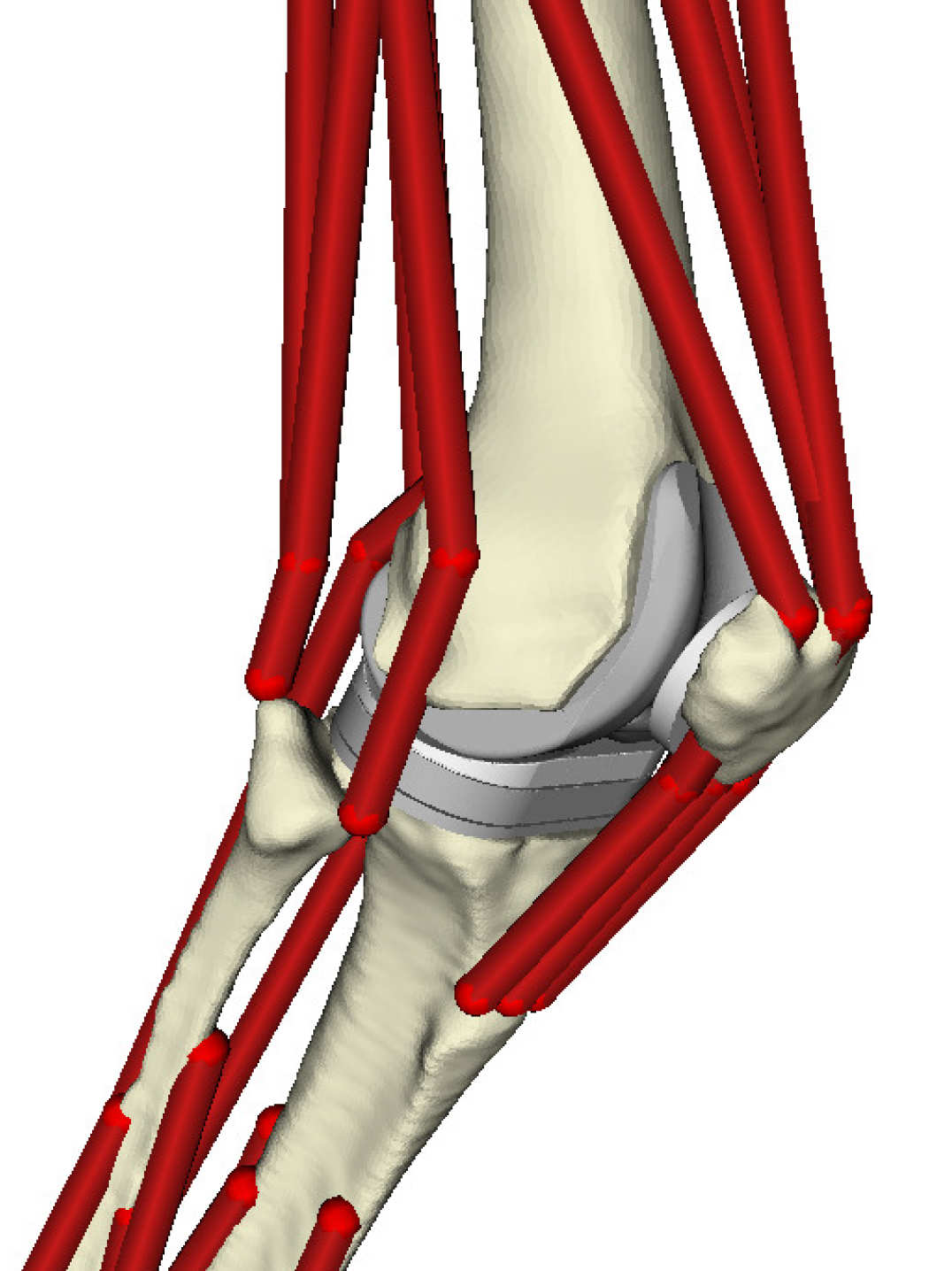Computational Biomechanics
The core topic of Dr Modenese's research is computational biomechanics and in particular musculoskeletal modelling. Biomechanics has been defined as "The study of the structure and function of biological systems by means of the methods of mechanics" (Hatze, 1974), and musculoskeletal modelling fits in this definition by modelling the musculoskeletal system as a multibody system, composed of rigid bodies (bones) connected by mechanical joints and actuated by line actuators with physiological force-generating characteristics. The controls used to activate the muscles are aiming to represent motor control.
Musculoskeletal models can be used to investigate forces within the human body, which are not possible to measure without using invasive methods, and hence gain insights on the effects of physical interventions, rehabilitation programmes, musculoskeletal disease progression etc.

Musculoskeletal and multibody model of the lower limb.
Subject-specific modelling

Within the musculoskeletal research topic, a primary interest consists in developing computational techniques to create personalized musculoskeletal models from segmented bone and muscle geometries. This means that, for a certain individual, a computational representation of the musculoskeletal system will be generated from routine medical images obtained from computed tomography (CT) or magnetic resonance imaging (MRI).

Example of musculoskeletal model built from segmented geometries of bones and muscles
Orthopaedic biomechanics

Personalised computational models of the musculoskeletal system can be employed in clinical applications such as orthopaedics biomechanics. For example, surgical techniques can be simulated and optimised with the aim of improving their outcome.

Simulation of total knee replacement using a musculoskeletal model

